To clean up noisy night sky photos, shoot in RAW at lower ISO (800-1600) and use wider apertures (f/2.8 or wider). Capture multiple images of the same scene for stacking with software like DeepSkyStacker, which naturally reduces noise. Apply conservative noise reduction in post-processing using tools like Topaz DeNoise or free alternatives like Nik Dfine. Cool your camera between shots to minimize thermal noise. These techniques will transform your starry captures from grainy to gorgeous.
Understanding Noise Sources in Night Sky Photography
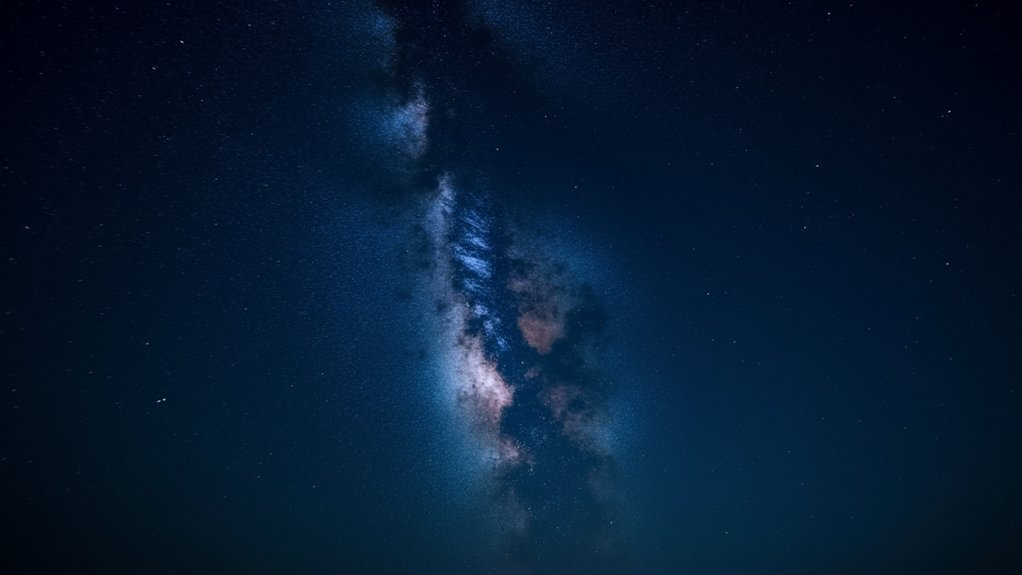
When capturing the magic of the night sky, you’ll inevitably encounter noise—the unwanted visual distortion that can diminish your images’ quality. This interference primarily stems from two sources: thermal noise and digital noise.
Thermal noise develops as your camera sensor heats up during long exposures, particularly those exceeding 30 seconds. You’ll notice this degradation increasing proportionally with exposure time.
Long exposures create heat, and heat breeds noise—the longer your shutter stays open, the more your image quality suffers.
Meanwhile, higher ISO settings amplify digital noise, creating a delicate balance you must manage.
You’ll typically encounter two noise patterns: random noise (colored speckles scattered throughout your image) and fixed pattern noise (consistent artifacts that appear in the same location).
Understanding these distinctions helps you apply the right reduction techniques. By recognizing how sensor heat, exposure duration, and ISO settings contribute to noise, you’ll be better equipped to capture cleaner night sky images.
Optimal Camera Settings to Minimize Digital Noise
Armed with an understanding of noise sources, you can now take practical steps to minimize it through your camera settings.
Select a camera with a native ISO range suitable for astrophotography, with ISO 6,400 often providing the best balance for night skies. Avoid your camera’s built-in Long Exposure Noise Reduction feature, which can actually degrade image quality.
Always shoot in RAW format to capture maximum data for post-processing with noise reduction software.
Calculate your maximum exposure time using the 500-rule (500 divided by focal length) to prevent star trails while gathering sufficient light. Pair this with a wide aperture lens (f/2.8 or wider) to enhance light collection.
These ideal camera settings will greatly reduce digital noise before you even begin editing, ensuring cleaner night sky photos.
Low-Light Exposure Techniques for Cleaner Images

Finding the sweet spot between exposure settings is your first defense against unwanted noise in night sky photography.
You’ll want to keep your ISO as low as possible while still capturing enough light, typically starting at ISO 800-1600 and adjusting based on your specific conditions.
Remember that every camera has an ISO performance threshold where image quality begins to degrade considerably, so test your equipment’s limits before your shooting session.
Optimal Exposure Balance
Because night sky photography requires capturing extremely faint light, mastering the perfect exposure balance becomes critical for producing clean, detailed images.
Apply the 500-rule or NPF rule to determine your maximum shutter speed without star trails, while using the widest aperture your lens allows (ideally f/2.8 or wider).
Keep your ISO as low as possible (800-1600 range) to minimize noise while still capturing enough detail. Always shoot in RAW format to preserve maximum data for post-processing.
Consider shooting multiple frames of the same composition to stack later with a noise reduction program, greatly improving image quality.
For serious astrophotographers, a star tracker represents a worthwhile investment, allowing longer exposures at lower ISO settings without star trails, effectively bypassing the High ISO Noise Reduction challenges altogether.
ISO Strategy Fundamentals
While capturing the night sky requires sufficient light collection, mastering ISO strategy remains fundamental to producing clean, detailed astrophotography.
Start by keeping your ISO setting between 800 and 6,400—going higher introduces excessive noise, while lower values won’t gather enough light.
For significant noise reduction, capture multiple exposures at moderate ISO values rather than a single high-ISO shot. This approach allows for image stacking, which dramatically improves the signal-to-noise ratio in your final composite.
Don’t overlook thermal noise—it increases with sensor temperature and exposure duration.
Shoot in cooler conditions when possible, and implement dark frame subtraction by capturing matched dark frames. This technique effectively removes hot pixels and pattern noise that would otherwise compromise your image quality.
Temperature Management for Noise Reduction
Your camera’s sensor heats up during long exposures, generating unwanted noise that can ruin your night sky images.
You’ll achieve notably cleaner results by actively cooling your sensor with specialized equipment like the ASI 2600MC, or by simply shooting during colder nights when possible.
Remember to turn off your camera’s Long Exposure Noise Reduction feature, as it ironically increases internal heat and can worsen the very problem you’re trying to solve.
Sensor Cooling Techniques
When capturing long-exposure night sky photos, temperature management becomes essential for minimizing thermal noise. Dedicated astrophotography cameras like the ASI 2600MC offer active cooling systems that considerably reduce thermal noise by maintaining the sensor at consistently low temperatures.
You’ll achieve better image quality by shooting during cooler nights, as your camera sensor generates less heat in lower ambient temperatures. For ideal results, consider using temperature-controlled environments or external cooling systems to maintain stable conditions throughout your imaging session.
Implementing 2×2 binning techniques can further improve your signal-to-noise ratio, though at the cost of some resolution.
Don’t forget to capture dark frames at the same temperature as your light frames—these can be subtracted during processing to eliminate remaining thermal noise patterns from your final images.
Camera Heat Management
Heat buildup considerably impacts image quality during extended night sky photography sessions, demanding proactive temperature control strategies. As your camera operates, especially during long exposures, its sensor generates thermal noise that degrades image quality. To minimize this effect, shoot during cooler ambient temperatures whenever possible.
Between exposures, allow your camera to cool down rather than shooting continuously. Consider using dark frames—shots taken with identical camera settings but with the lens cap on—to subtract thermal noise during post-processing.
While some cameras offer built-in long exposure noise reduction, this feature actually increases internal heat buildup and often proves counterproductive for astrophotography.
For serious night sky photographers, specialized cooled cameras like the ASI 2600MC deliver superior results by actively managing sensor temperature, dramatically reducing noise in your final images.
Image Stacking Methods for Noise Suppression

Although single exposures can capture the night sky, they often fall short in delivering clean, detailed images. Image stacking solves this problem by combining multiple shots taken at lower ISO settings, dramatically improving your signal-to-noise ratio.
Single exposures can’t match the clarity and detail achieved through image stacking, which combines multiple shots for superior signal-to-noise ratio.
You’ll find the median stacking method particularly effective for noise reduction in astrophotography, as it averages out random noise while preserving critical details. Software like DeepSkyStacker helps align your images precisely, compensating for Earth’s rotation and preventing star trails in your final composition.
For best results, include additional exposures specifically for foreground elements to enhance dynamic range. By stacking just two or more images, you’ll achieve approximately 1.4 times better signal-to-noise ratio compared to single shots.
This simple technique transforms noisy, grainy night photos into clean, detailed masterpieces.
Software Tools for Post-Processing Noise Reduction
Once you’ve mastered the art of image stacking, you’ll need powerful software tools to further refine your night sky photos.
Adobe Lightroom’s Detail panel offers precise control over noise reduction while preserving critical star details. For more demanding work, consider specialized plugins like Topaz DeNoise or Nik Dfine, which excel at targeting noise while protecting faint celestial objects.
Your post-processing workflow should integrate stacking software like DeepSkyStacker to average out noise across multiple exposures.
Don’t overlook the importance of calibration frames—dark, flat, and bias frames greatly enhance your final results. For the most demanding astrophotography projects, advanced filters in PixInsight provide exceptional noise reduction capabilities, though they require deeper technical knowledge.
Combining these software options strategically will dramatically improve your night sky photos while maintaining the delicate details that make astrophotography so rewarding.
Preserving Star Details While Removing Noise

While removing noise from night sky photography seems straightforward, the true challenge lies in preserving delicate star details during the process. Shooting in RAW format gives you a significant advantage, retaining essential data that helps maintain star integrity during post-processing.
When editing, apply noise reduction software conservatively—tools like Topaz Denoise or Nik Dfine are specifically designed to respect astrophotography’s unique requirements.
Implement luminosity masks to target noise reduction only in darker image areas while protecting brighter stars.
Selectively deploy luminosity masks to preserve stellar brilliance while tackling noise only in the darkest regions of your frame.
For best results, consider stacking multiple exposures to improve your signal-to-noise ratio before applying any noise reduction.
Keep luminance correction modest (around +32) to avoid the mushy effect that eliminates star texture. This balanced approach guarantees you’re removing unwanted noise while preserving star details that make your night sky images truly spectacular.
Budget-Friendly Noise Reduction Solutions
Many photographers mistakenly believe that effective noise reduction requires expensive software or high-end equipment. In reality, you’ll find plenty of budget-friendly options that deliver excellent results for your night sky photography.
| Software | Type | Key Benefit |
|---|---|---|
| Nik Dfine | Free Plugin | Professional-grade results with intuitive controls |
| GIMP | Open-Source | Versatile platform supporting various noise reduction plugins |
| DeepSkyStacker | Free Stacking | Combines multiple exposures to naturally reduce noise |
Take advantage of your camera’s built-in noise reduction settings as your first line of defense. For post-processing, image stacking is particularly effective—capture multiple exposures of the same scene and let DeepSkyStacker blend them to dramatically reduce noise while preserving details. NoiseWare offers another affordable plugin option with results that often rival premium alternatives.
Frequently Asked Questions
How Do You Reduce Noise in Night Sky Photography?
You’ll reduce noise in night sky photography by using ideal shutter speeds, shooting in cooler temperatures, disabling in-camera noise reduction, stacking multiple exposures, and applying selective post-processing noise reduction with specialized software.
What Is the Best Noise Reduction for Astrophotography?
The best noise reduction for astrophotography is image stacking. You’ll get superior results when you combine multiple exposures using software like DeepSkyStacker, complemented by targeted post-processing with tools like Topaz Denoise or Adobe Lightroom.
How Do I Reduce the Noise in a Dark Picture?
To reduce noise in dark pictures, you’ll want to use longer exposures, shoot in cooler temperatures, and employ software like Topaz Denoise. Don’t forget to try image stacking to effectively enhance your signal-to-noise ratio.
How to Make Night Time Photos Less Grainy?
To make night photos less grainy, you’ll want to use low ISO (800-1600), apply the 500/NPF rule for shutter speed, stack multiple exposures, and use targeted noise reduction in post-processing like Topaz Denoise.
In Summary
By implementing these noise reduction techniques, you’ll transform your grainy night sky photos into crisp, detailed astronomical images. Remember, there’s no single perfect method—it’s about combining the right camera settings, shooting techniques, and post-processing approaches for your specific conditions. Don’t sacrifice those delicate star details while chasing cleaner images. With practice, you’ll find your perfect balance between noise reduction and preserving the magic of the night sky.
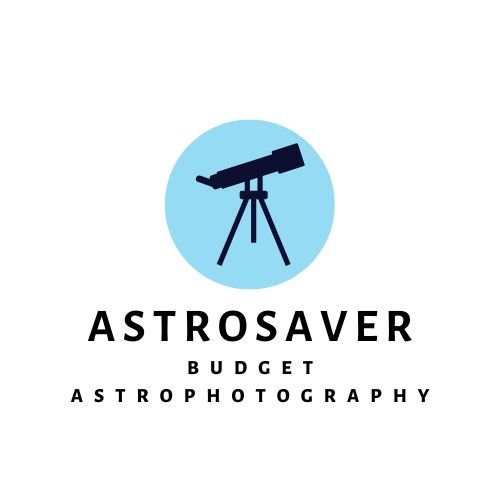

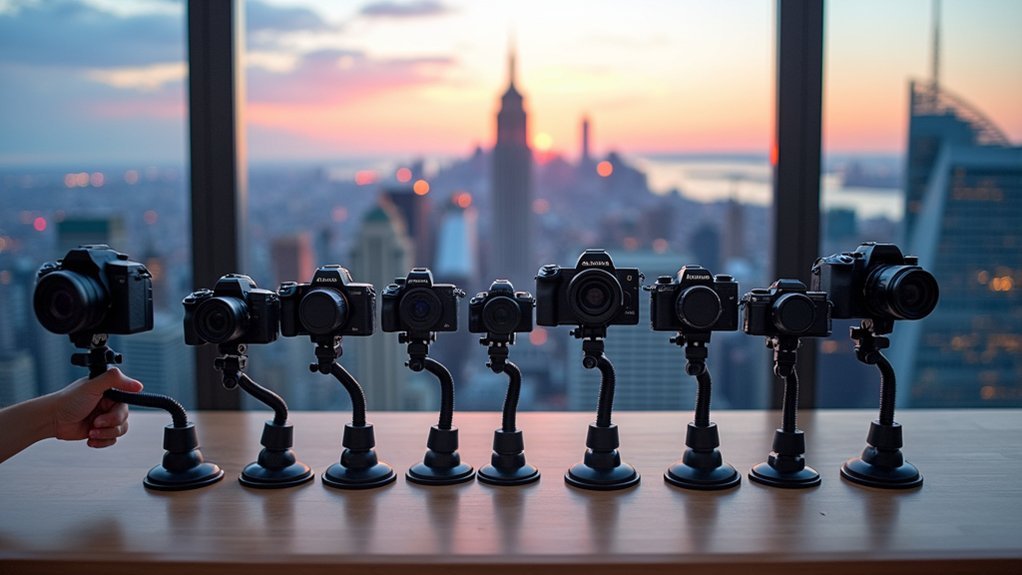
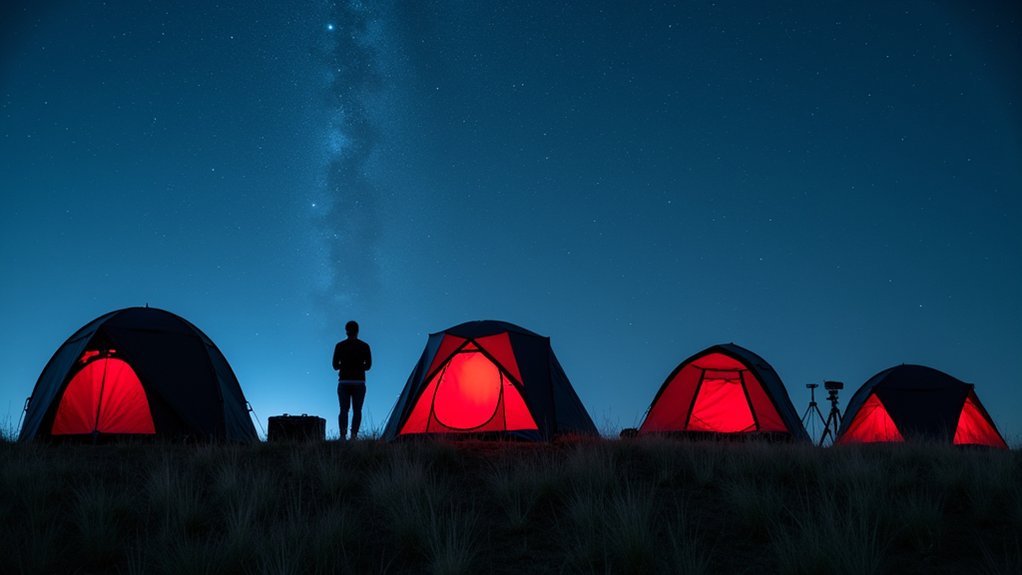
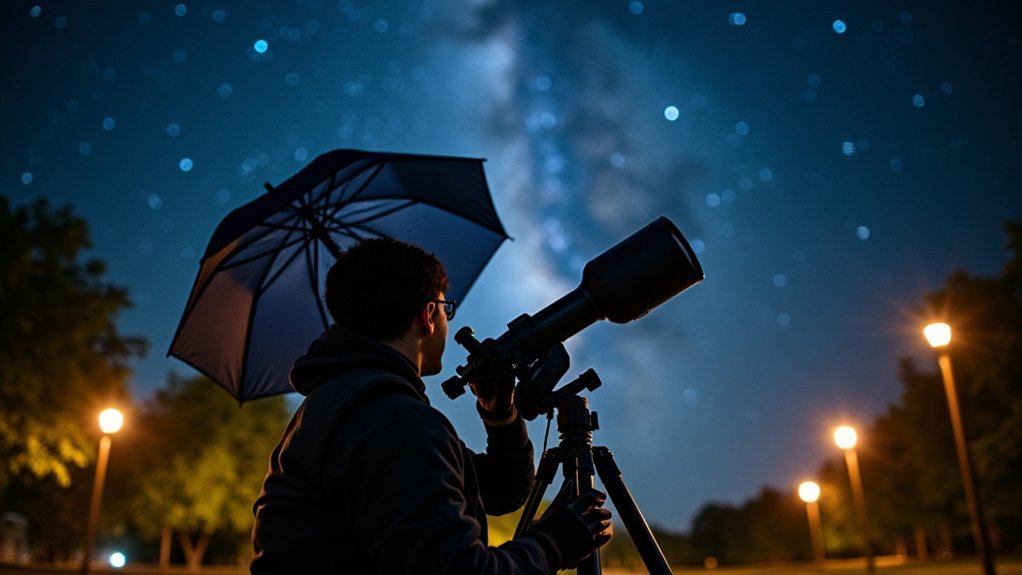
Leave a Reply